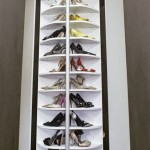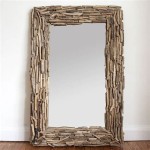How to Mirror Your iPhone to a Non-Apple TV
Mirroring an iPhone screen onto a larger display offers a convenient way to share photos, videos, presentations, or even gaming experiences. While Apple TV provides a seamless solution through AirPlay, users often find themselves needing to mirror their iPhone to a non-Apple TV. This article details several methods for achieving this, outlining the necessary hardware, software, and steps involved.
Using an HDMI Adapter
One of the most reliable and straightforward methods for mirroring an iPhone to any TV, regardless of its brand or smart capabilities, is using an HDMI adapter. This method bypasses the need for wireless connections and offers a stable, high-quality connection, particularly beneficial for streaming video content or playing graphically intensive games.
To utilize this method, an appropriate HDMI adapter is required. Apple offers a Lightning Digital AV Adapter, which connects to the iPhone's Lightning port and provides an HDMI output. Third-party adapters are also available, often at a lower price point. It’s crucial to verify that any third-party adapter is MFi (Made for iPhone/iPad/iPod) certified to ensure compatibility and avoid potential damage to the iPhone.
Once the HDMI adapter is acquired, connect it to the iPhone's charging port. Then, connect an HDMI cable to the adapter and the corresponding HDMI port on the TV. Select the corresponding HDMI input on the TV using the TV's remote. The iPhone screen should then be mirrored onto the TV display. The image quality depends on the adapter and HDMI cable used. High-quality adapters and cables will ensure a clear and crisp picture.
This method also allows for simultaneous charging of the iPhone. Apple's Lightning Digital AV Adapter includes a Lightning port for charging while mirroring. This is especially useful for extended mirroring sessions, preventing battery drain.
While the HDMI adapter method provides a stable and reliable connection, it does involve a physical cable connection, limiting mobility. However, the benefits of a direct connection, such as minimal latency and consistent image quality, often outweigh this limitation for many users.
Employing Chromecast for Screen Mirroring
Google Chromecast offers an alternative wireless mirroring solution for iPhone users. While Chromecast does not directly support AirPlay, several apps and workarounds enable iPhone screen mirroring to a Chromecast-enabled device.
First, a Chromecast device must be connected to the TV and configured using the Google Home app on the iPhone. The Chromecast device connects to the TV via an HDMI port and requires a stable Wi-Fi connection. Once the Chromecast is set up and connected to the same Wi-Fi network as the iPhone, specific apps can be used to facilitate screen mirroring.
Several third-party apps available on the App Store enable iPhone screen mirroring to Chromecast. Examples include "Replica," "Screen Mirroring - TV Cast," and similar applications. These apps typically work by capturing the iPhone's screen and transmitting it to the Chromecast device.
After installing a compatible app, launch it and follow the on-screen instructions to connect to the Chromecast device. The app will usually scan for available Chromecast devices on the network. Select the desired Chromecast device from the list, and the app will initiate the screen mirroring process.
The quality of the mirrored image and the latency depend on the Wi-Fi network's stability and the app's performance. A strong and stable Wi-Fi connection is essential for optimal results. Some lag or occasional glitches may occur, particularly during graphically intensive activities.
Chromecast offers a wireless solution, providing greater flexibility and mobility compared to an HDMI adapter. However, it also relies on a stable Wi-Fi connection and the performance of third-party apps. Users should experiment with different apps to find one that provides the best performance for their specific needs.
Utilizing Miracast-Enabled Devices
Miracast is a wireless display standard that allows devices to mirror their screen to a compatible receiver. While Miracast is not as widely supported as AirPlay or Chromecast, some smart TVs and dedicated Miracast adapters support this technology. Using a Miracast receiver offers another method for mirroring an iPhone screen to a non-Apple TV, though it often requires additional setup and may not be as consistently reliable as other methods.
To use Miracast, a Miracast-enabled receiver is needed. This could be a smart TV with built-in Miracast support or a dedicated Miracast adapter that connects to the TV via HDMI. Ensure the TV or adapter is powered on and set to the correct input.
iPhone does not natively support Miracast. Again, third-party applications are needed to bridge this gap. Apps such as "AirBeamTV" or similar screen mirroring apps often include support for Miracast. These apps function by capturing the iPhone's screen and re-transmitting it according to Miracast protocols.
Open the chosen app and follow the instructions to connect to the Miracast receiver. This typically involves enabling screen mirroring in the iPhone's Control Center and selecting the Miracast device from a list of available devices in the app. The app will then establish a connection and begin mirroring the iPhone’s display.
Miracast can be susceptible to interference and connection issues. The performance relies heavily on the proximity of the iPhone to the receiver and the absence of obstructions that might impede the wireless signal. Compatibility issues can also arise, as not all Miracast devices are created equal, and some may not work seamlessly with certain screen mirroring apps.
The advantage of Miracast is that it provides a direct wireless connection without relying on a local Wi-Fi network. This can be beneficial in situations where a Wi-Fi network is unavailable or unreliable. However, the potential for connection issues and compatibility problems makes it a less consistently reliable option compared to HDMI adapters or Chromecast.
In summary, mirroring an iPhone to a non-Apple TV can be achieved through multiple methods, each with its own advantages and disadvantages. HDMI adapters offer a reliable and high-quality wired connection, while Chromecast provides a wireless solution via third-party apps. Miracast offers another wireless option but may be less reliable. The best method depends on individual needs, technical capabilities, and the desired level of performance and reliability.

3 Ways To Mirror Iphone Tv Without Apple Istreamer

How To Mirror Iphone Tv Without Apple

How To Screen Mirror Iphone A Non Smart Tv

How To Mirror Iphone Tv Without Apple Airdroid

How To Mirror Iphone Tv Without Apple 3 Methods 2024

How To Mirror Iphone Tv Without Apple 3 Methods 2024

What S Screen Mirroring Iphone And How Does It Work Rapid Repair

Simple Ways To Mirror Iphone Tv Without Wifi 6 Steps

What Is Screen Mirroring Iphone How To Set It Up

Simple Ways To Mirror Iphone Tv Without Wifi 6 Steps








